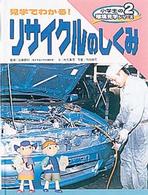- ホーム
- > 洋書
- > 英文書
- > Science / Mathematics
Full Description
This thesis proposes new approaches for modelling contacting interactions and electrostatic interactions between microparticles in the framework of the discrete element method and presents a systematic investigation on the agglomeration, migration and deposition of microparticles in presence of electrostatic and flow fields. It reports an exponential-form scaling for the size distribution of early-stage agglomerates in homogeneous isotropic turbulence and formulate the agglomeration and deagglomeration rates. The evolution of spherical clouds of charged particles that migrate under the action of an external electrostatic field is then investigated. Scaling laws of cloud radius and particle number density are obtained by solving a continuum convection equation. Finally, it investigates the deposition of charged particles on a flat plane and fibers. A dimensionless adhesion parameter is constructed to predict the structure of deposits. The temporal evolution of the deposit structure, particle capture efficiency, and the pressure drop are displayed with varying values of Coulomb repulsion and adhesion magnitudes.
Contents
Introduction.- A Fast Discrete Element Method for Adhesive particles.- Agglomeration of microparticles in homogenous isotropic turbulence.- Migration of cloud of low.- Reynolds-number particles with Coulombic and hydrodynamic interactions.- Deposition of Microparticles with Coulomb repulsion.- Deposition of charged micro-particles on fibers: clogging phenomenon.- Conclusions and perspective.








